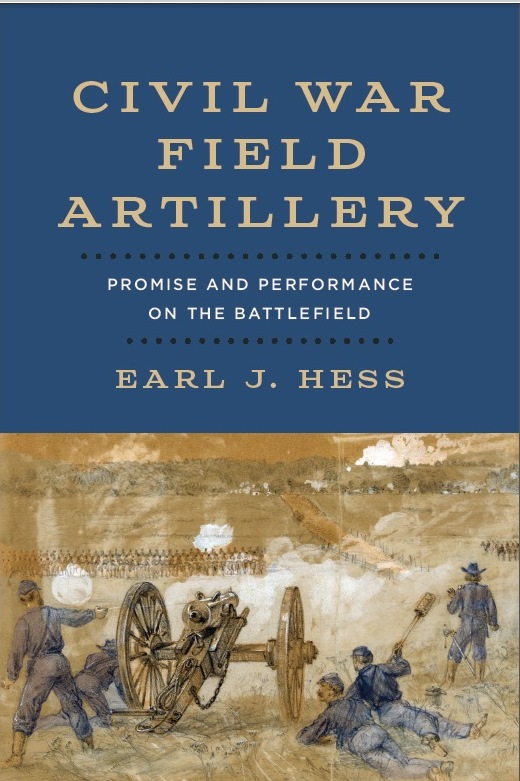Civil War Field Artillery: Promise and Performance on the Battlefield
To order, go to: https://lsupress.org/books/detail/civil-war-field-artillery/

“Both reinforcing and reshaping existing interpretations of Union and Confederate artillery, this thought-provoking study is required reading for anyone wishing to gain a broad and nuanced understanding of the role and performance of the long arm on the Civil War battlefield.”-- Drew Wagenhofer in Civil War Books and Authors
The American Civil War saw the creation of the largest, most potent artillery force ever deployed in a conflict fought in the Western Hemisphere. Its size was about as large and powerful as any raised in prior European wars. Moreover, Union and Confederate artillery included the largest number of rifled pieces fielded in any conflict in the world up to that point. Amazingly, Earl J. Hess’s Civil War Field Artillery is the first comprehensive general history of the artillery arm that supported infantry and cavalry in the conflict. Based on deep and expansive research, it is a comprehensive examination with abundant new interpretations that contribute to re-envisioning the Civil War’s military.
To reach those new conclusions, Hess explored the major factors that affected artillerists and their work, including the hardware, the organization of artillery power, relationships between artillery officers and other commanders, environmental factors on the battlefield, and influences on effectiveness. He also examined the lives of artillerymen, the use of artillery horses, manpower replacement practices, the effect of widespread use of field fortifications on artillery performance, and the problems of resupplying batteries in the field. In one of his numerous fresh interpretations, Hess suggests that the early war practice of dispersing the guns and assigning them to infantry brigades or divisions did not inhibit the concentration of artillery power on the battlefield and that the concentration system of the latter half of the conflict failed to produce more concentration of guns. In another break with existing scholarship, Hess shows that the effectiveness of fuzes to explode long-range ordnance was a problem throughout the war rather than one that each side corrected. Indeed, cumulative data on what type of projectiles commanders fired in battle shows that they lessened their use of the new long-range exploding ordnance due to bad fuzes while increasing their use of solid shot, the oldest artillery projectile in history.
Published by:
Louisiana State University Press
Johnston Hall, Room 338
Baton Rouge, LA 70803
1-800-848-6224